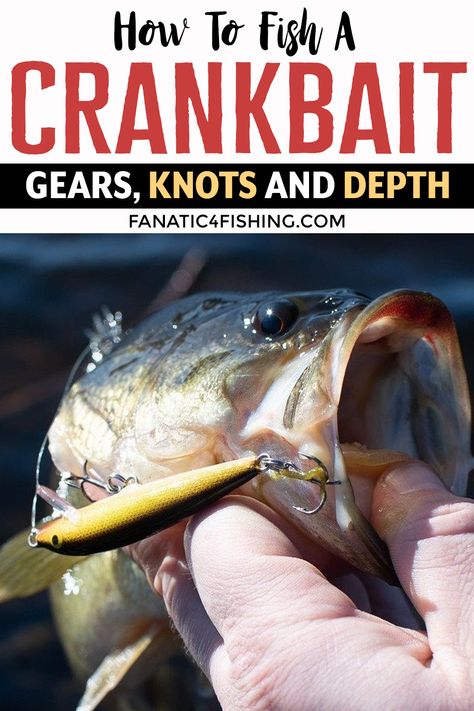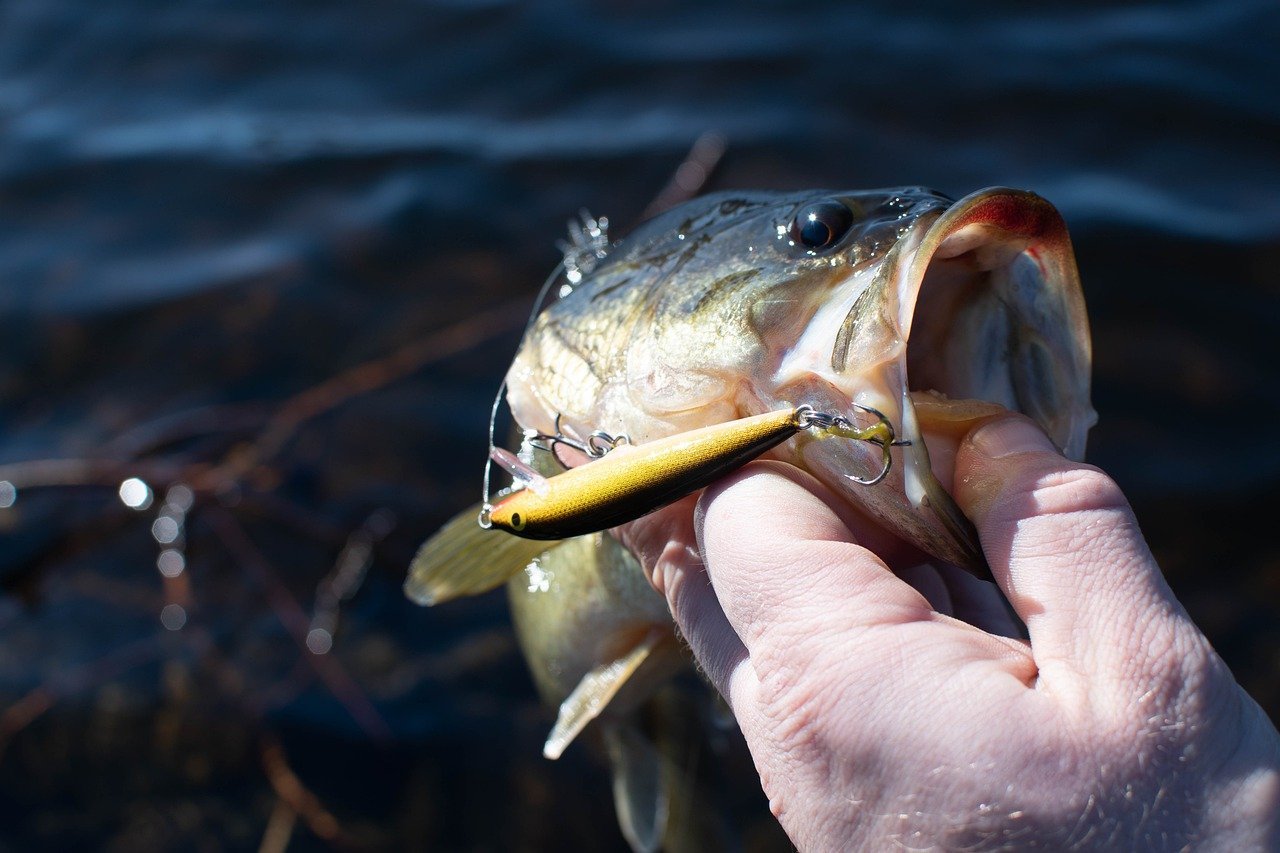Crankbait fishing is a very effective way to catch fish ranging from a wide variety of species, and crankbaits themselves come in many different styles, actions, and sizes, with some being created for a specific niche technique. Let’s take a look at an overview of how to fish a crankbait and crankbait fishing as a whole.
Overview of Crankbait Fishing
Even with what seems to be unlimited options in crankbaits today, we can still break down the most commonly used tactics and the crankbaits best suited for fishing different species and conditions.
Shallow Running Crankbaits
Shallow crankbaits are great to use for a wide variety of species from spring to fall, with the best times typically being in spring when fish push shallower as water temperatures increase, which in turn boosts their metabolism before and after the spawn. Fall is also a great time to use shallow running crankbaits for many species like bass and walleye, as they follow pods of baitfish that push shallow during the fall months as water temperature decrease from their summer highs.
Shallow running crankbaits, as the name implies, run relatively close to the surface, from just below the surface or “subsurface” depths, to up to 5 feet in depth.
Shallow running crankbaits are great when used around sand flats, shallow rock bars, humps that peak close to the surface, newly emerging vegetation, stumps, brush, docks, and other shallow-water locations that harbor fish.
It’s important to note that crankbaits can snag up on objects or foul easily, so make sure your crankbait swims shallow enough to avoid snagging the cover below it.
The Best Shallow Running Crankbaits
- All minnow fishing lures come with 3 sharp treble hooks which make it a powerful catching tool
- The latest coating and painted surface laser realistic fish pattern with 3D ball eyes has excellent fish effect. Great actions throughout the line.
- Durable ABS material in various bright colors to attract different big fishes contribute to long service life and can be applied to both freshwater and saltwater
- With steel weighted ball inside,the ball is always rolling when dumping which can control barycenter easily and can be casted far
- Noise rattle model design which has unique rhythmic sound make fishing baits more easily to be attacked by various fishes
Prices pulled from the Amazon Product Advertising API on:
Product prices and availability are accurate as of the date/time indicated and are subject to change. Any price and availability information displayed on [relevant Amazon Site(s), as applicable] at the time of purchase will apply to the purchase of this product.
Medium Diving Crankbaits
Medium diving crankbaits are used in the summer predominantly, but can also be used in the fall and winter months as well. As water temperatures continue to climb in late spring, many fish species start moving to deeper water to their summer feeding haunts. So since 5 feet is typically what we would consider shallow crankbaits deepest territory in most cases, this is the depth at which medium crankbaits start, with most medium diving crankbaits diving to around 10 feet in depth. Medium crankbaits are great when worked around submergent structure like humps, points, brush or rock piles, deeper flats adjacent to cover, and structural drop-offs. This is where the medium diving crankbait can really shine.
The Best Medium Diving Crankbaits
- Quantity:15pcs
- Size:5/1oz
- Diving Depth:15-20ft
- Come with half eyes for free
- One knocker deep div
Prices pulled from the Amazon Product Advertising API on:
Product prices and availability are accurate as of the date/time indicated and are subject to change. Any price and availability information displayed on [relevant Amazon Site(s), as applicable] at the time of purchase will apply to the purchase of this product.
- Tournament-winning bass lure
- Reliable durability
- Kick-out paddle reduces hang ups
- Diving Depth: 4 - 8 F
Prices pulled from the Amazon Product Advertising API on:
Product prices and availability are accurate as of the date/time indicated and are subject to change. Any price and availability information displayed on [relevant Amazon Site(s), as applicable] at the time of purchase will apply to the purchase of this product.
Deep Diving Crankbaits
Deep diving crankbaits work well in various fishing situations, with diving depths of up to 15-25 feet, depending on the model and design of the crankbait your using.
This, like the medium diving crankbait, works well from late spring to late fall and into the winter months for a wide number of species like bass, walleye, musky, and pike, among others.
Deep diving crankbaits can really excel when you need to fish open water for suspended predators like walleye, musky, striper, or even bass. As summer progresses, baitfish move deep and create large schooling pods that the predatory fish follow into the open water, and in many cases, if you have a good sonar unit, you can see the large fish below and around these schools.
Along with suspended water, deep diving crankbaits work great on the same types of structure that medium crankbaits work well around, such as humps, points, rock piles, and more.
In many cases, using a deep-diving crankbait at depths shallower than its maximum diving depth allows you to bump the structure. This contact collision is a massive fish triggering tactic that will help trigger fish to eat even during difficult fishing conditions.
Some of the Best Deep Diving Crankbaits
- BEST BASS LURES-Crankbaits are one of the most commonly used bass lures. Crankbaits come in shallow crankbait and deep diving crankbait for your choice.
- BRILLIANT COLORS:Unbelievable spectrum of colors and realistic crankbait with lifelike bait fish swimming action to attract fishes which can be used in both saltwater and freshwater.
- METAL BALL INSIDE:With steel ball inside,Control barycenter easily,cast far.Noise model design,make fishing lures more easily to be sensed.
- WIDE RANGE OF APPLICATIONS-Crankbaits can be effective just about anywhere there are bass; steep rocky banks and ledges, broad shallow flats, near grass beds, and over and around brush and stumps.
- EASY TO USE-While the basic method of fishing crankbaits is quite simple; cast it out far and crank it back in, A fat body crankbait features a wide wobbling action while the flat model runs in a tight wiggling action.there are a few tricks we can learn from the pros to use crankbaits more effective
Prices pulled from the Amazon Product Advertising API on:
Product prices and availability are accurate as of the date/time indicated and are subject to change. Any price and availability information displayed on [relevant Amazon Site(s), as applicable] at the time of purchase will apply to the purchase of this product.
- 128 1/2-inch slender minnow/jerkbait trolls to around 27 feet deep and swims with a wide, searching action
- Ultimate trolling minnow for walleyes, zander and other gamefish
- Universal color patterns for wide-ranging effectiveness
- Designed in collaboration with walleye fishing experts
- Molded-in lip for true-running toughness
- Trolls up to 27 Feet
- Length is 475 Inch
- Weight is 5/8 Ou
Prices pulled from the Amazon Product Advertising API on:
Product prices and availability are accurate as of the date/time indicated and are subject to change. Any price and availability information displayed on [relevant Amazon Site(s), as applicable] at the time of purchase will apply to the purchase of this product.
What Is The Best Gear Ratio for Crankbaits?
The answer to the question of “what is the best gear ratio for crankbaits” is different for many anglers and crankbaits. A 12 to 14-inch crankbait for musky requires gear ratios that are very different from that of a 3-inch crankbait for walleye or bass.
A good general all-round gear ratio for most species is going to be around 5.1:1. This gear ratio is going to allow you to easily reel in most crankbaits relatively easily, and it will also help to achieve the maximum diving depth of your crankbait.
A higher gear ratio can be used if you are fishing crankbaits that have little resistance and you want to work fast, like waking just below the surface in shallow water, for example.
What are the Best Knots for Crankbaits?
Like the subject of gear ratios, this question also has multiple answers. The biggest consideration that needs to be taken when answering this question is the type of line your using.
For Monofilament and fluorocarbon lines, it’s hard to beat the tried and tested improved clinch knot, which is the first knot most of us learn when we are kids.
When it comes to braided lines, Palomar knots are hard to beat. Using improved clinch knots for braid is not the optimal choice, as braided lines have a tendency to slip due to their coatings, and will cause the knot to fail.
For musky and pike anglers who run leaders, this question has even more answers and depends again on how you personally run your setup.
For tying to a swivel of a leader, a Palomar knot will work fine. I personally prefer the big bulky, and incredibly strong power knot myself. On some leader setups where I don’t want the added weight of a barrel swivel, I tend to tie double uni knots, these knots require some practice when tying to braid, but I personally use this knot for most musky fishing setups.
How to Fish a Crankbait – Conclusion
Crankbaits, like all lures, should be looked at by anglers as tools that are used in a specific place at a specific time. You don’t use a screwdriver to drive nails home, and the same rule applies to fishing lures. Figuring out exactly when and where to use a crankbait and what crankbait is suited best for fishing different species is something that you will learn with time and experience on the water. When used in the proper conditions can be incredibly effective.












